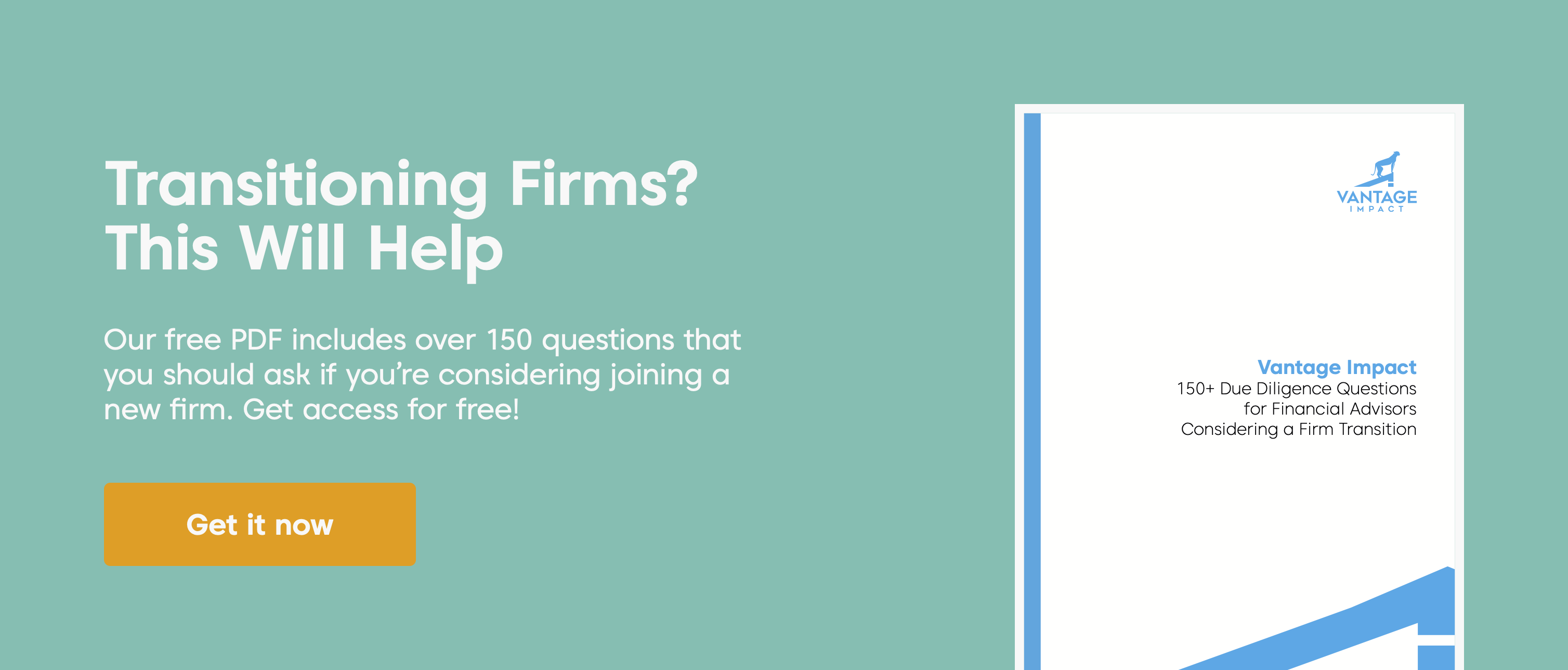Perhaps it seems like a lifetime ago when your first client signed the paperwork that changed everything. Or maybe you’ve been in the industry for a few years, and it’s looking like the right pieces are in place to acquire another practice.
Regardless of where your firm is in its maturity, with one-third of financial advisors set to retire over the next decade, changes to the landscape are happening.
These changes may lead you to wonder: what are the most important non-financial factors when it comes to positioning yourself for success in an acquisition?
Whatever form an acquisition takes, the immediate priority is often the financial aspect - ensuring that the deal looks great from a numbers perspective. However, in pursuit of getting the deal done, it’s important to recognize that the human side of an acquisition can be even more important than the financial.
If thoughtfully considered at the onset, optimizing the human aspect keeps key talent and clientele informed and engaged, giving a deal a much greater chance of success.
Here are 5 key points to keep the human side of the acquisition at the forefront:
1. Consider your organizational structure
When doing valuation and due diligence, consider how you will organize your people.
Organizational structure should be considered as part of the deal planning process - not based on people, names, or departments, but on the organizational structure that will best serve the customer.
Starting from how you will service the customer, work back to find the best groups to meet customer needs, then determine the people to fill those roles. Structuring your teams in this way sets you up for success.
Establishing an organizational structure with clearly defined roles and effective leadership is no small task. Consider converting the firm’s current organizational chart into a cloud-based editable document that can be refined and edited over time. We recommend a digital tool like Whimsical to get started.
Whimsical allows leaders to quickly and efficiently create visuals, share real-time across teams, and include important comments or links. While a tool is simply a tool, sometimes the first step of converting a hard-copy document into a customizable visual can be the first step in making key organizational decisions.
Consider a cloud-based tool to lay out your organizational structure, share with other members of your leadership, and recommend or clarify key roles to serve customers.
If the firm does not have a clearly defined organizational chart, we recommend starting with a clear definition of your onboarding process for new clients. Establish the steps and the process from the first discovery call to what happens when they sign and officially become a client.
Thoroughly documenting your onboarding will help clarify your organizational structure, including what is needed and what the priorities should be. This is a great first step in building out a larger, overarching perspective of the different roles in your organization and who should be managing what part of the customer journey.
2. Clarify who your firm is, and who it wants to be
Cultural and operational integration can be very complex. Different firms and advisors are often at different places from a technology standpoint.
Recognize that bringing systems and people together who have different ways of working can be a challenge. Ensure that advisors talk with each other about how their clients have come to expect interactions with advisors - has it been in the office or virtual, how many meetings do they have each year, what sorts of topics are often discussed? In a similar way, for the advisors themselves - how do they like to prepare for client meetings, what technology platforms are preferred, and what systems are used to bring it all together?
Aligning on who your firm is and how it works together, for the clients, is critical to maintaining clientele. If the intention of the acquiring advisor or team is to provide services differently than what the client is used to, make sure you have a communications plan to keep clients informed.
Set expectations early, have a strong announcement plan in place, and collect feedback to ensure a smooth experience.
3. Approach the acquisition with empathy
Think of the people piece early. People problems should not be unexpected; rather, they should be anticipated with the right planning and forethought.
For instance, oftentimes a selling advisor will be going into retirement either suddenly or in a gradual way over time. If planned for, the acquiring advisor has an opportunity to celebrate the tenure of this advisor and should have communications in place to honor the past accomplishments while also developing an outlook for the future. The selling advisor could be going through a gamut of different emotions, and it’s important for the acquiring advisor to understand the challenge of what it feels like for their life’s work to be handed over.
Acquiring advisors and teams must also acknowledge the significance of the change for clients. Not only are they losing the relationship with their advisor, potentially a long-time acquaintance, but they are going to be asked to do more work in having to start over with a new advisor.
Use proactive client communication, such as a Frequently Asked Questions (FAQ) document, to anticipate their concerns, and put a strategic plan in place to respond to them throughout the process. A video webinar presentation recorded by the acquiring advisor can serve as an evergreen “asset,” available on demand for current clients and new clients alike. The ability to reference a video, to listen directly to the advisor talk through and acknowledge the change, helps alleviate the stress of what is happening.
For firm employees, particularly in external acquisitions, the acquiring firm and advisors must find a way for people to immediately, positively contribute to success.
Just like the client-facing FAQ, build a plan for proactively addressing employee common questions/concerns - provide avenues for disseminating information and for people to ask questions. Too long a time of not knowing how to contribute or what it means leads to talent leaving.
Current and new employees should understand the impetus of the acquisition, what it means for the future state, and how each of them will contribute to the plan/goals.
4. Involve leaders
It’s critical to pay attention to fitting culture together, but also important is involving front-line leaders in decisions - don’t leave them blindsided, hand them a strategy or task them with a seemingly impossible execution and timeline. Help them feel invested in strategy as soon as you can.
One way to do this is to assign a leadership team to intake important questions from employees/clients. These topics are then discussed amongst the leadership team, and on a weekly basis until the acquisition is fully completed the team can provide answers and insight with the rest of the team.
Remember, the team is probably working harder and more hours than they have in a long time. It’s important for the leadership team to demonstrate how progress is being made with the acquisition, and consistently remind others what’s in it for them at the end. The overall timeline is important. Make sure others understand the overall picture and when this major event is going to reach the finish line. And celebrate small wins! Every small success is moving you closer to your goal.
5. Understand the timeline
When doing due diligence, set a deadline for when the team will decide on whether they should buy or sell.
For example, if the team is looking to complete an acquisition, align on when a decision should be made by, and how it will be made.
Remember a purchase or sale of a practice is a huge distraction from running the business - when parameters are put in place, things move so much more smoothly, even for the selling advisor.
If the seller says they plan to sell their practice by the end of the year, the urgency and seriousness of potential buyers will be much better.
--
Acquisitions, while potentially lucrative, can be tremendously challenging for employees and clientele. By recognizing the human aspect from the onset, keeping awareness levels high, and maintaining open lines of communication, acquiring firms can set the stage for a smooth transition.
At Vantage Impact, we act as agents for financial advisors looking to navigate the complexity of firm transitions or acquisitions. If you’d like to talk more about your plans or simply want to explore your options, we’d love to listen. Get in touch today!




